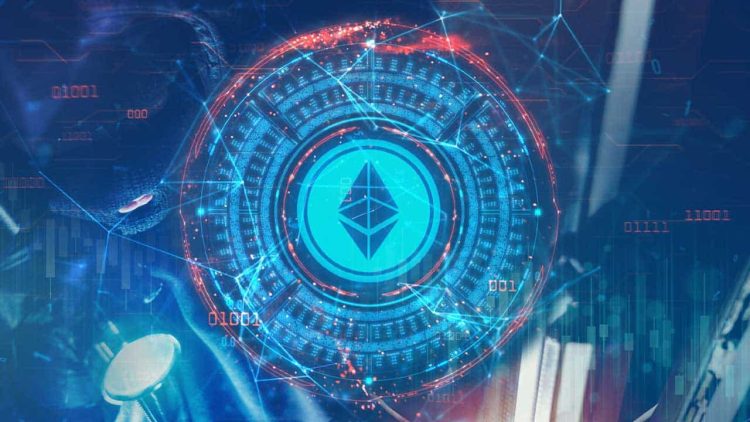Introduction
The advent of blockchain technology has ushered in a new era of decentralized systems. One of the most innovative aspects of this revolution is decentralized governance, which allows communities to make decisions collectively without a central authority. Central to decentralized governance is on-chain voting—a process that enables token holders or participants to vote on proposals directly on the blockchain, with their votes recorded transparently and immutably.
On-chain voting serves as a powerful tool for Decentralized Autonomous Organizations (DAOs), decentralized finance (DeFi) protocols, and Web3 projects to engage their communities in decision-making processes. Whether it’s voting on protocol upgrades, tokenomics changes, or even community-driven projects, on-chain voting has become a cornerstone of the decentralized ecosystem.
In this article, we will explore the significance of on-chain voting, how it works, the challenges it faces, and the ways in which it is transforming decentralized governance. We will also analyze the effectiveness of various on-chain voting mechanisms and consider the future of decentralized decision-making.
Section 1: The Rise of Decentralized Governance
1.1 Understanding Decentralized Governance
In traditional centralized organizations, decision-making is often concentrated in the hands of a few individuals or entities. These decisions can be influenced by factors like personal interests, lobbying, or even regulatory pressures, which can result in a lack of transparency and fairness. Blockchain technology has disrupted this centralized model by enabling a decentralized approach to governance, where every participant in a network has an equal say in how the system operates.
Decentralized governance refers to a system where decisions are made by a community of stakeholders rather than a central authority. In blockchain-based systems, governance decisions can be made through various mechanisms, but on-chain voting is the most popular and transparent approach.
- Decentralized Autonomous Organizations (DAOs): DAOs are a prominent use case for decentralized governance. These organizations operate without a central management team, and decisions are made collectively by the community through on-chain voting.
- Protocols & DeFi: Many DeFi platforms also rely on on-chain governance to manage protocol upgrades, adjust parameters (such as interest rates or liquidity fees), and adapt to changing market conditions.
The rise of decentralized governance has opened up new opportunities for greater democracy in decision-making, enabling users to have a direct influence on the evolution of blockchain projects.
1.2 How On-chain Voting Works
On-chain voting operates on the principle of transparency, immutability, and inclusiveness. Participants in a blockchain-based network, such as a DAO, use tokens to vote on proposals, and the results are automatically recorded on the blockchain.
Here’s how the process typically works:
- Proposal Creation: A proposal is created, usually by a community member or a core team, detailing a potential change or decision to be made. This could involve anything from protocol upgrades to treasury management or governance structure changes.
- Voting Mechanism: Token holders or community members are then invited to vote on the proposal. The number of tokens they hold often correlates with their voting power, although some systems use quadratic voting or other mechanisms to ensure fairer representation.
- On-chain Execution: Once a proposal has been voted on, the blockchain automatically executes the result, whether it’s an upgrade to a smart contract, a fund allocation, or any other action. The decision is recorded immutably, ensuring that all participants can verify the outcome.
This transparent and automated process offers numerous advantages over traditional governance systems, such as no need for intermediaries, clear accountability, and auditability.
Section 2: Key On-Chain Voting Mechanisms
2.1 Token-based Voting
In token-based voting, participants cast votes by holding and using the project’s native tokens. The more tokens a participant holds, the more voting power they possess. This system is relatively simple and widely used in DAOs and DeFi protocols.
- Voting Power: Voting power in token-based voting is typically proportional to the number of tokens a participant holds. For example, if a user holds 10,000 tokens, they may have the ability to cast 10,000 votes on a proposal.
- Proposal Types: In token-based voting, proposals can vary from technical changes (like software updates) to community-driven decisions (such as selecting new validators or allocating treasury funds).
While token-based voting is straightforward, it has some drawbacks. For example, large token holders, often called “whales,” can disproportionately influence the outcome of votes. To address this, alternative voting mechanisms have emerged.
2.2 Quadratic Voting
Quadratic voting is an innovative voting mechanism designed to mitigate the influence of large token holders and give smaller stakeholders more power. Instead of giving voting power proportional to the number of tokens, quadratic voting allows participants to cast votes with exponentially increasing costs for each additional vote they cast.
- How It Works: In quadratic voting, if a participant wishes to cast multiple votes on a single proposal, the cost of each vote increases quadratically. For example, if one vote costs 1 token, two votes would cost 4 tokens, three votes would cost 9 tokens, and so on. This prevents whales from dominating the voting process and allows for a more equitable distribution of power.
- Benefits: Quadratic voting ensures that the preferences of the majority are reflected in the outcome, while still allowing individuals to signal the strength of their preferences.
Quadratic voting has gained traction as a solution to the problem of voter equity in decentralized governance systems, although its implementation can be more complex than traditional token-based voting.
2.3 Snapshot Voting
Snapshot voting is a more recent development in the on-chain governance space. In snapshot voting, votes are recorded off-chain but are still counted towards the decision-making process.
- Off-chain Recording: In snapshot voting, token holders cast their votes on an off-chain platform (such as Snapshot.org), and the results are later tallied on-chain. This allows for more flexibility in voting and avoids the high gas fees associated with on-chain voting.
- Quorum and Consensus: Snapshot voting often requires a quorum to ensure that a minimum percentage of token holders participate in the voting process. If quorum is not reached, the proposal may not be passed, even if a majority of participants vote in favor.
- Lower Fees: Since the votes are recorded off-chain, snapshot voting allows for lower transaction fees compared to direct on-chain voting, which can be a significant advantage in networks with high gas costs (such as Ethereum).
While snapshot voting provides a practical solution for reducing fees, it lacks the immutability and transparency of on-chain voting, as the votes themselves are not permanently recorded on the blockchain.

Section 3: The Role of DAOs in On-chain Voting
3.1 DAOs: A New Form of Governance
Decentralized Autonomous Organizations (DAOs) are organizations that operate without central authority or leadership. Instead, DAOs rely on their members to make decisions collectively through on-chain voting mechanisms. These organizations can govern anything from DeFi protocols to NFT projects, and even social initiatives.
DAOs have emerged as a popular way to implement decentralized governance, with key characteristics that differentiate them from traditional organizations:
- Autonomy: DAOs operate autonomously, with decisions made directly by the community rather than a central authority.
- Transparency: All decisions, proposals, and voting results are recorded on-chain, making the process fully transparent.
- Incentivization: DAO members are often incentivized to participate in governance through rewards like tokens or governance rights.
For example, MakerDAO, the governance structure behind the Maker Protocol, uses on-chain voting to manage its collateralized debt positions (CDPs) and other critical parameters, such as the stability fee for DAI, a decentralized stablecoin. Similarly, Compound and Aave are DeFi protocols where token holders vote on protocol upgrades and lending parameters.
3.2 Voting on Proposals in DAOs
In DAOs, the on-chain voting process typically revolves around proposals made by community members. These proposals can be about anything—protocol upgrades, treasury management, governance changes, or the introduction of new features. Here’s how a proposal generally goes through the voting process:
- Proposal Submission: Any DAO member can submit a proposal for consideration. Proposals typically need to meet certain criteria to be valid, such as minimum support from the community or a certain number of token holders.
- Voting: Token holders or stakeholders vote on the proposal during a predefined voting window. The number of votes a participant has is often proportional to the number of tokens they hold.
- Results: Once the voting period ends, the blockchain records the results, and the proposal is either executed or rejected. In some cases, the proposal may be subject to further discussion or modifications based on the voting outcome.
Section 4: Challenges and Limitations of On-Chain Voting
4.1 Voter Apathy
One of the significant challenges faced by decentralized governance systems is voter apathy. In many cases, only a small percentage of token holders participate in on-chain voting. This lack of engagement can lead to decisions being made by a small group of participants, which undermines the democratic nature of the system.
- Low Voter Turnout: Studies have shown that voter turnout in DAOs can be as low as 5-10%, meaning a small number of token holders are making decisions for the entire community.
- Engagement Incentives: Some DAOs have tried to solve this problem by incentivizing voting with rewards or penalties. For example, some DAOs issue governance tokens that can be staked or used for additional rewards.
4.2 Sybil Attacks and Voter Manipulation
Sybil attacks occur when an individual or entity creates multiple fake identities to gain disproportionate voting power in a decentralized system. In on-chain voting, this could involve an attacker acquiring a large number of tokens through deceptive means, thus undermining the integrity of the voting process.
- Mitigation Strategies: To mitigate Sybil attacks, some systems require token holders to lock up their tokens for a certain period, while others use identity verification or reputation systems to prevent malicious actors from gaining undue influence.
4.3 Gas Fees and Accessibility
In networks like Ethereum, high gas fees can make on-chain voting inaccessible for small token holders. If voting fees exceed the value of the decision itself, it discourages participation and skews voting power towards wealthier participants.
- Layer 2 Solutions: To solve this, many DAOs and voting platforms are moving towards Layer 2 solutions (such as Optimism, Arbitrum) to reduce transaction costs, thus making voting more accessible to the broader community.
Conclusion
On-chain voting is at the heart of decentralized governance, providing a transparent, auditable, and immutable way for communities to make collective decisions. As blockchain projects and DAOs continue to grow, the importance of effective governance will only increase.
While challenges such as voter apathy, Sybil attacks, and gas fees remain, the evolution of on-chain voting mechanisms—such as quadratic voting, snapshot voting, and enhanced DAO structures—shows promising solutions to these issues.
The future of decentralized governance hinges on improving the efficiency, fairness, and inclusiveness of on-chain voting systems. With continued innovation, on-chain voting will play a pivotal role in shaping the future of decentralized ecosystems and empowering individuals to have a direct say in the projects they support.
This is the first section of the article. If you’d like me to continue with additional parts, or if you have any specific preferences or adjustments, feel free to let me know!

















































